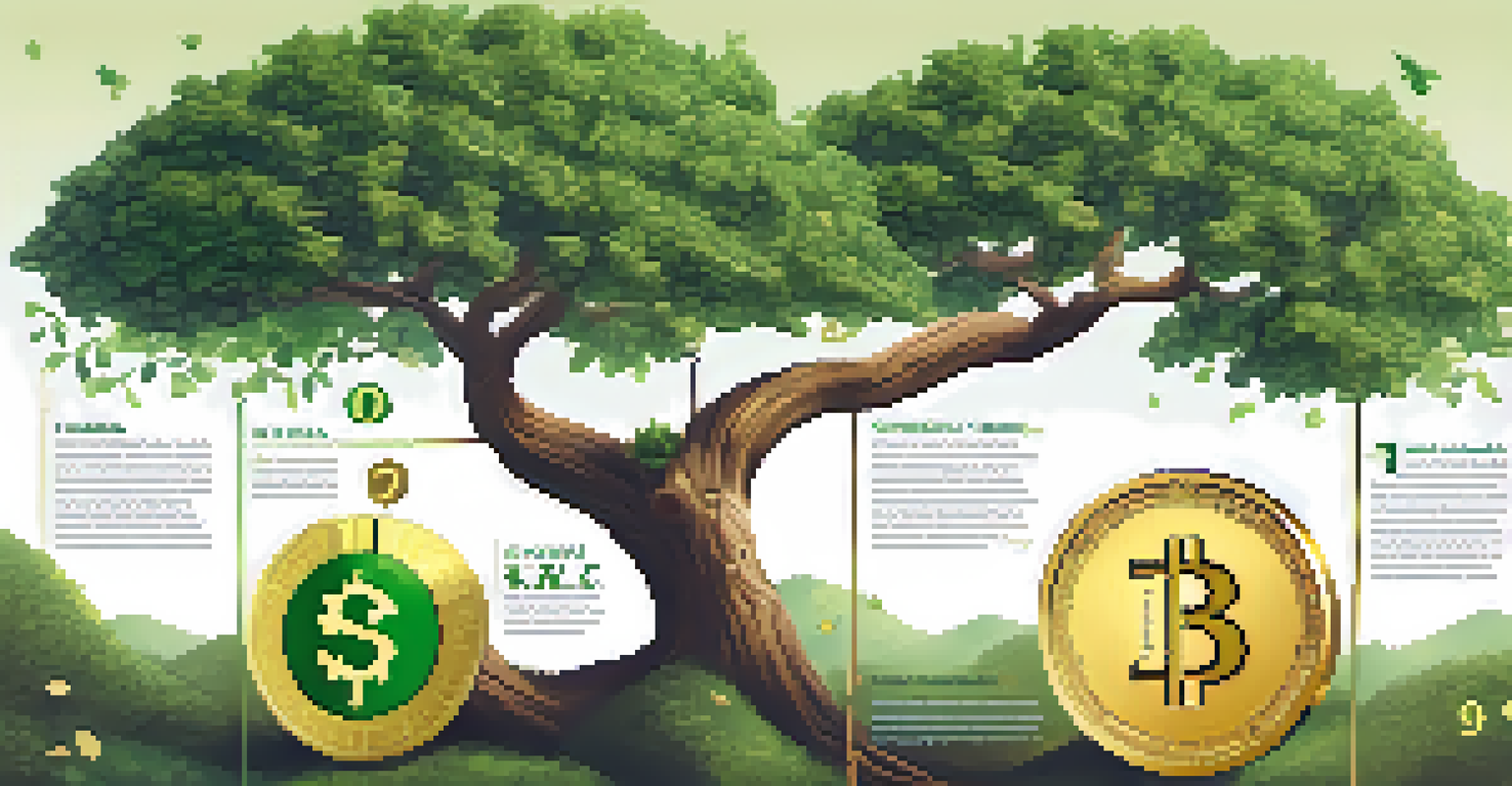Understanding Compound Interest: Grow Your Wealth Wisely

What is Compound Interest and Why It Matters
Compound interest is the interest on a loan or deposit calculated based on both the initial principal and the accumulated interest from previous periods. This means your money can grow exponentially over time, rather than just linearly. It's a powerful financial concept that can significantly boost your savings if you understand and utilize it correctly.
Compound interest is the eighth wonder of the world. He who understands it, earns it; he who doesn't, pays it.
Imagine you plant a tree that grows fruit every year. In the first year, you harvest a few fruits, but as the tree matures, it produces even more fruits, which can then grow into new trees. Similarly, compound interest allows your initial investment to generate returns, and those returns can generate their own returns, creating a cycle of growth.
Understanding compound interest can help you make informed decisions about saving and investing. By grasping this concept, you can leverage it to enhance your financial future, whether you're saving for retirement, a home, or other life goals.
How Compound Interest Works in Simple Terms
At its core, compound interest works on the principle of reinvesting your earnings. When you earn interest on your investment, instead of cashing it out, you leave it in your account to earn even more interest. This process is often referred to as 'earning interest on interest.'

For example, if you invest $1,000 at an annual interest rate of 5%, you'll earn $50 in the first year. If you leave that $50 in the account, your total balance becomes $1,050. In the second year, you earn interest on $1,050, not just your initial $1,000. This compounding effect accelerates your growth over time.
Compound Interest Grows Exponentially
Compound interest allows your money to grow exponentially over time by earning interest on both the initial investment and the accumulated interest.
The frequency of compounding—whether annually, semi-annually, quarterly, or monthly—also affects how much you earn. The more often your interest compounds, the more you’ll earn, highlighting the importance of choosing the right investment vehicle.
The Formula Behind Compound Interest Explained
To calculate compound interest, you can use the formula A = P (1 + r/n)^(nt), where A is the amount of money accumulated after n years, including interest, P is the principal amount, r is the annual interest rate, n is the number of times interest is compounded per year, and t is the number of years the money is invested or borrowed.
The most powerful force in the universe is compound interest.
While this formula may look intimidating at first, it’s simply a way to quantify how your money grows over time. Breaking it down, you can see that the principal amount (P) grows based on the rate (r) and the frequency of compounding (n).
Understanding this formula can empower you to make better financial decisions. For instance, you can adjust the variables—like increasing your principal or choosing a higher interest rate—to see how they impact your total wealth over time.
The Power of Time in Compounding Wealth
One of the most significant factors in compound interest is time. The earlier you start investing, the more time your money has to grow. Even small amounts can turn into substantial sums if given enough time to compound.
Consider this: if you invest $1,000 at a 5% annual interest rate, in 30 years, you could have nearly $4,300. But if you wait just 10 years to start investing, you would only have about $1,600. This illustrates just how crucial starting early can be.
Time is Key for Wealth Growth
The earlier you start investing, the more time your money has to compound, leading to significantly larger returns.
Time not only amplifies your investment but also allows you to weather the ups and downs of the market. The longer you stay invested, the more likely you are to see positive returns, making patience a valuable virtue in wealth-building.
The Role of Interest Rates in Your Returns
Interest rates play a vital role in determining how quickly your wealth grows through compound interest. A higher interest rate means more substantial returns, making it essential to shop around for the best rates when investing or saving.
For instance, if you put your money in a savings account with a 1% interest rate versus a 5% rate, the difference in returns is staggering. Over 20 years, that same $1,000 investment could yield just $1,220 at 1% but over $2,600 at 5%.
However, it’s important to balance the lure of high rates with the associated risks. Investments with higher potential returns often come with more volatility, so understanding your risk tolerance is key to making sound financial decisions.
Practical Tips for Maximizing Compound Interest
To make the most of compound interest, start by setting clear financial goals and creating a consistent savings plan. Automating your contributions can ensure that you regularly add to your investments without even thinking about it.
Additionally, consider reinvesting your earnings. Whether it’s dividends from stocks or interest from bonds, putting that money back into your investment can significantly enhance your compounding effect. This strategy keeps the cycle of growth going strong.
Maximize Returns with Reinvestment
Reinvesting your earnings can enhance the compounding effect, making it crucial to keep your money working for you.
Finally, be patient and give your investments time to grow. Compounding is a long-game strategy, so resist the urge to withdraw early. The longer you stay in the game, the more significant your potential returns will be.
Common Mistakes to Avoid with Compound Interest
One common mistake is underestimating the power of starting early. Many people delay investing, thinking they need a large sum to start, but even small contributions can grow significantly over time. The key is to begin as soon as possible.
Another pitfall is failing to reinvest earnings. Cashing out your dividends might feel rewarding in the short term, but it undermines your long-term growth potential. Always consider reinvesting to maximize your wealth.

Lastly, watch out for high fees that can eat into your returns. Research investment options thoroughly and choose those with lower fees to keep more of your earnings working for you.